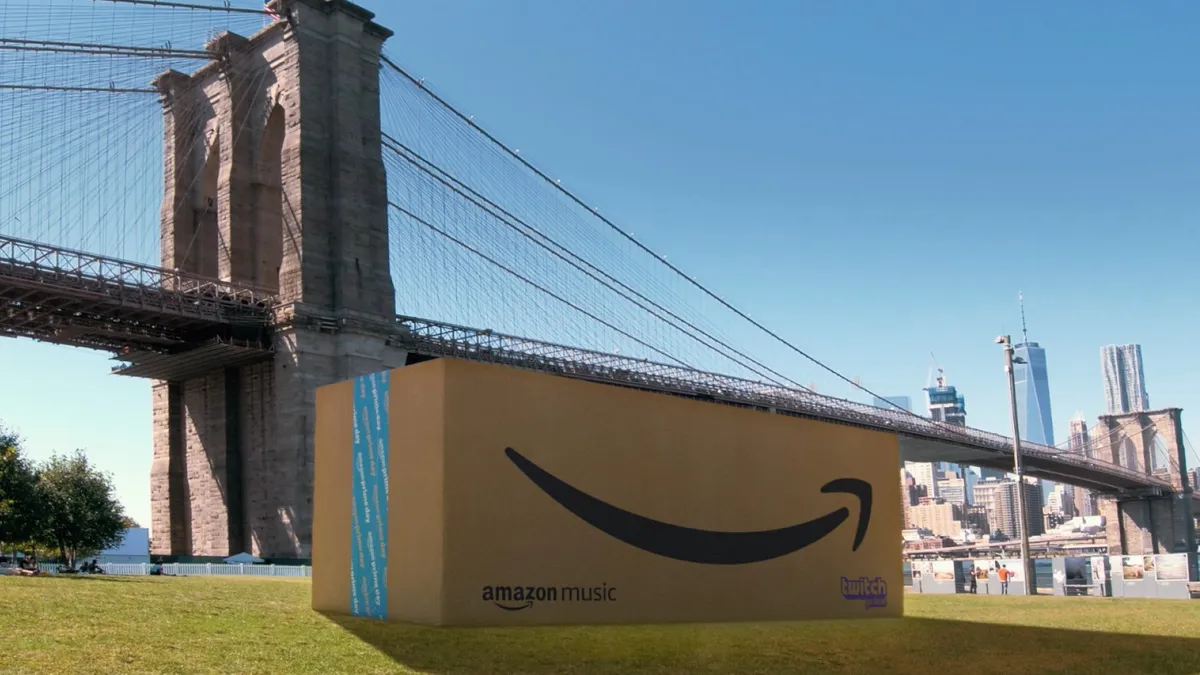Dive Brief:
-
Amazon this year will snap up nearly half — 49.1% — of U.S. e-commerce, up from 43.5% last year, according to eMarketer's latest forecast on the top online retailers. That translates to $258.22 billion in sales, up 29.2% over last year, eMarketer said.
-
Amazon's next closest competitor, eBay, controls only 6.6% of the market. And for all its investments, Walmart, No. 4 behind Apple, still has just 3.7% of online sales. Amazon now controls nearly 5% of the total U.S. retail market online and off, including brick-and-mortar sales, according to the report.
-
Amazon's Marketplace is beginning to dominate its sales, moving from about half (according to the company's own reports) to 68% this year by eMarketer's measure.
Dive Insight:
Nearly 25 years old, Amazon today is without a serious competitor in e-commerce. Its nine largest competitors combined don't even control half of the market share Amazon does.
Walmart, which has been investing and acquiring wherever it can, including most notably through the purchase of Jet, has so far only managed to keep itself from being left hopelessly behind.
Amazon is racking up sales in several categories, most notably computer and consumer electronics, its leading product segment, with U.S. sales of $65.82 billion or more than a quarter of its retail e-commerce business, according to eMarketer. Last year apparel and accessories surpassed books and music to become its second largest category. Amazon's U.S. apparel sales will also grow more than 38% this year to reach $39.88 billion, some 15.4% of Amazon's e-commerce business and 38.5% of all U.S. online apparel sales, eMarketer found.
To some extent, though, Amazon's market share is overstated, given that the majority of its sales, and potentially more than two-thirds by the end of the year, are made by third-party sellers through its Marketplace. Amazon, of course, gets a cut of those sales, and many of those sellers use Amazon's vast logistical and cloud infrastructure at further profit to the e-commerce giant.
Amazon's dominance is partly due to the success of its Prime loyalty program — which will be marketed heavily this week in its annual Prime Day sales event. A Prime member spends an average of $1,400 per year at Amazon, compared to $600 for a non-member.
The ascendancy of Amazon's Marketplace delivers not just a profit boost but also some trouble for the e-commerce giant. Amazon is able to capture a lot of e-commerce sales because, when it comes to online purchases, shoppers trust Amazon more than they do other online retailers, according to eMarketer.
But as its marketplace has taken over a greater portion of sales, Amazon's reputation for top-notch customer service has suffered, as some sellers fail to provide customers with solutions to problems, adequate packaging or shipping speeds, and, perhaps worst of all, authentic goods or goods-as-advertised. That could partly explain why the company is now also moving to consolidate its marketplace and retail teams.
As Moody's analysts point out, Amazon has a major advantage across retail: the patience of its investors, who don't mind slim margins and profits as the giant races to eat up market share. Moody's Lead Retail Analyst Charlie O'Shea describes a state of "Retail Darwinism" as everyone else tries to keep up and to survive the price war between Amazon and Walmart.
"In other words, fighting the margin battle is a no-win situation for most mid- to smaller-tier retailers," O'Shea said. "Match or undercut deep discount deals and see your margins erode — or do nothing and lose the sale, and potentially the customer."















